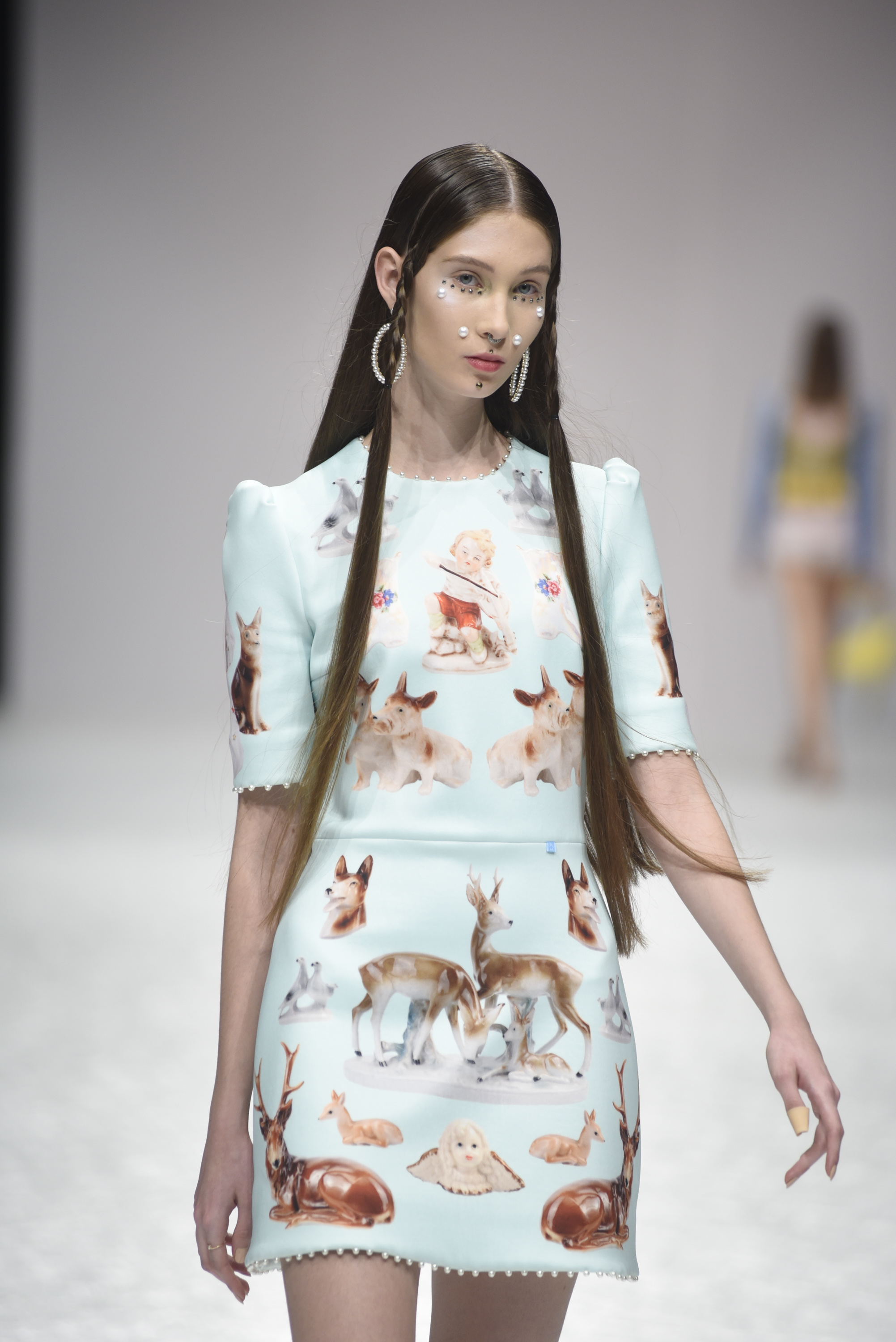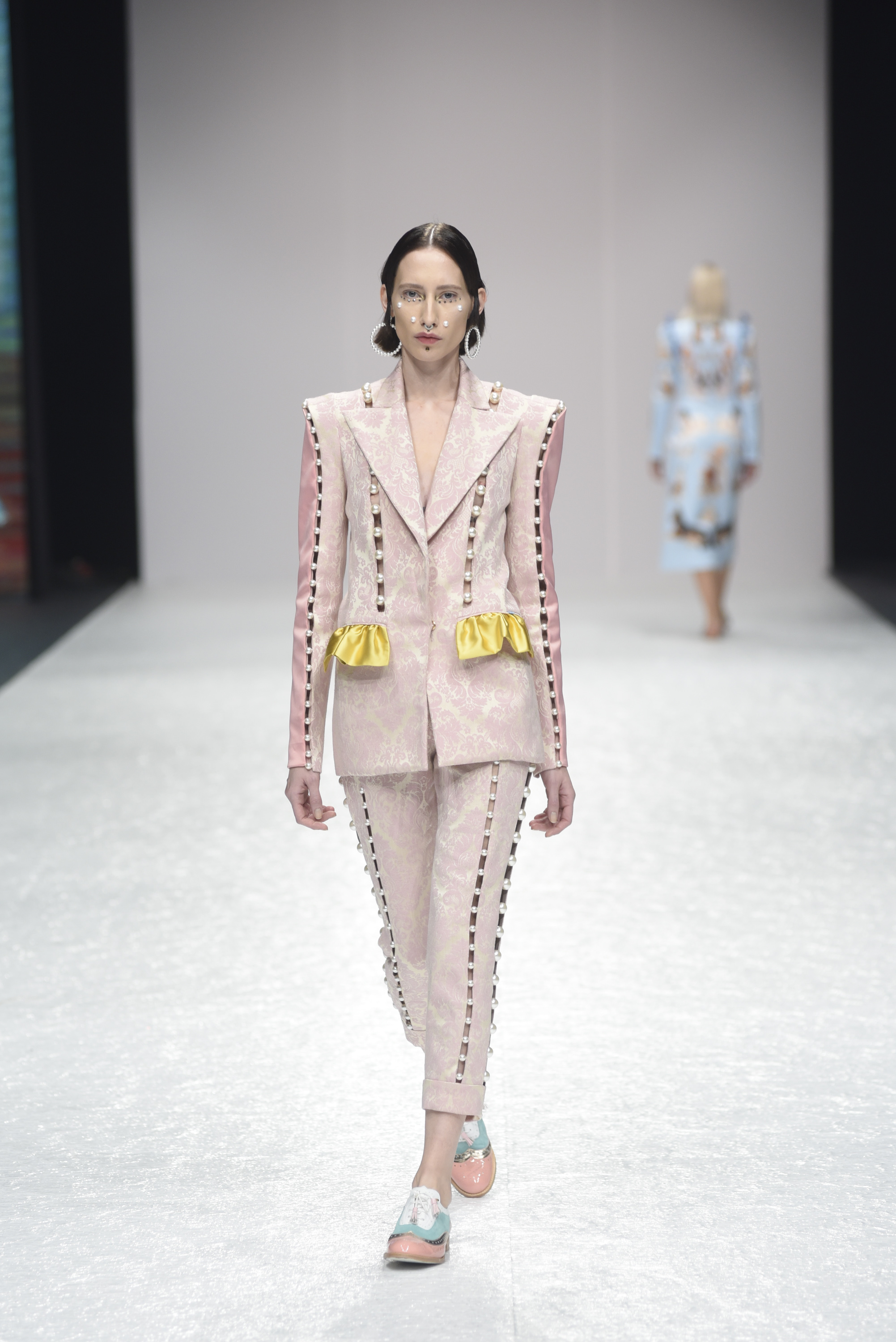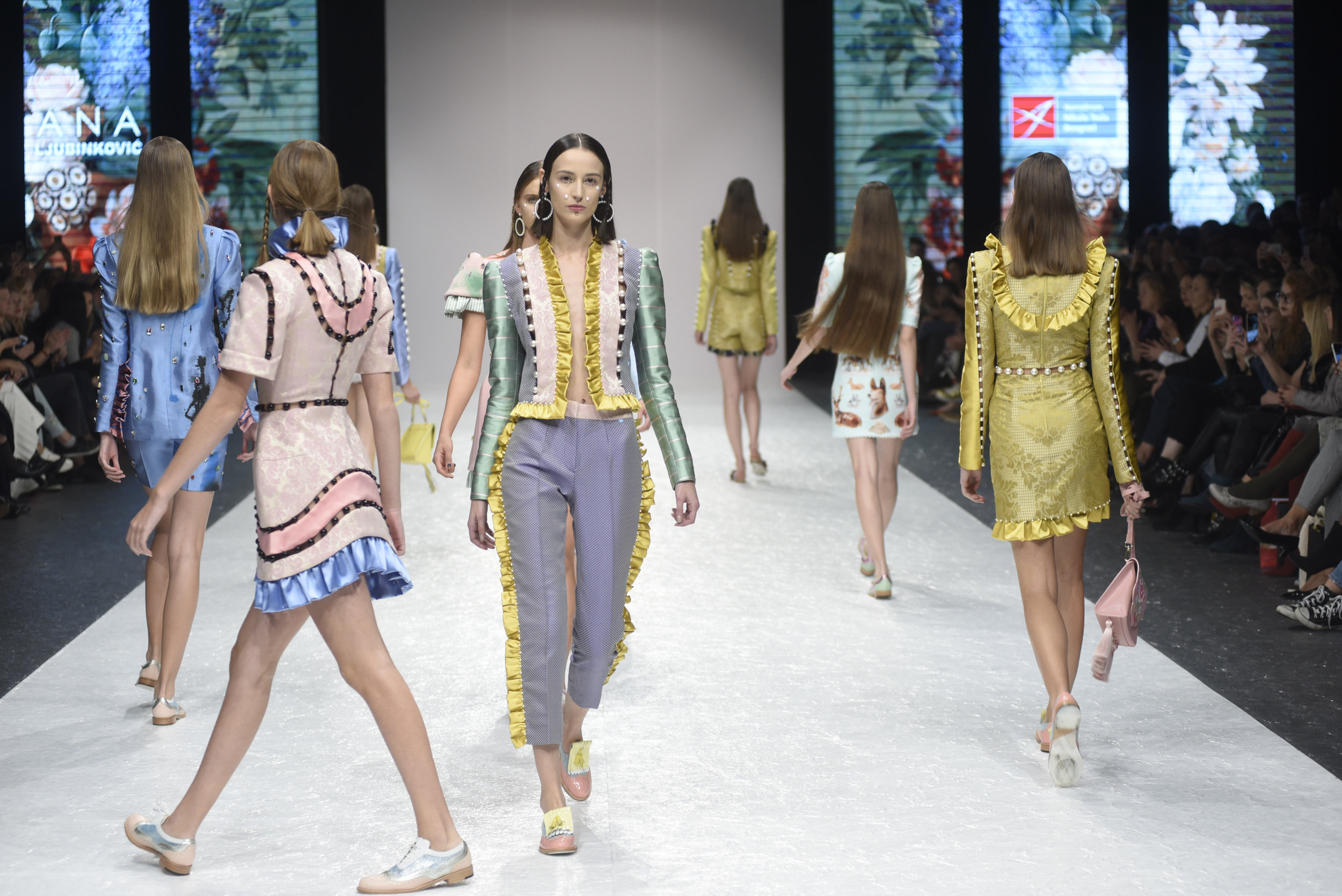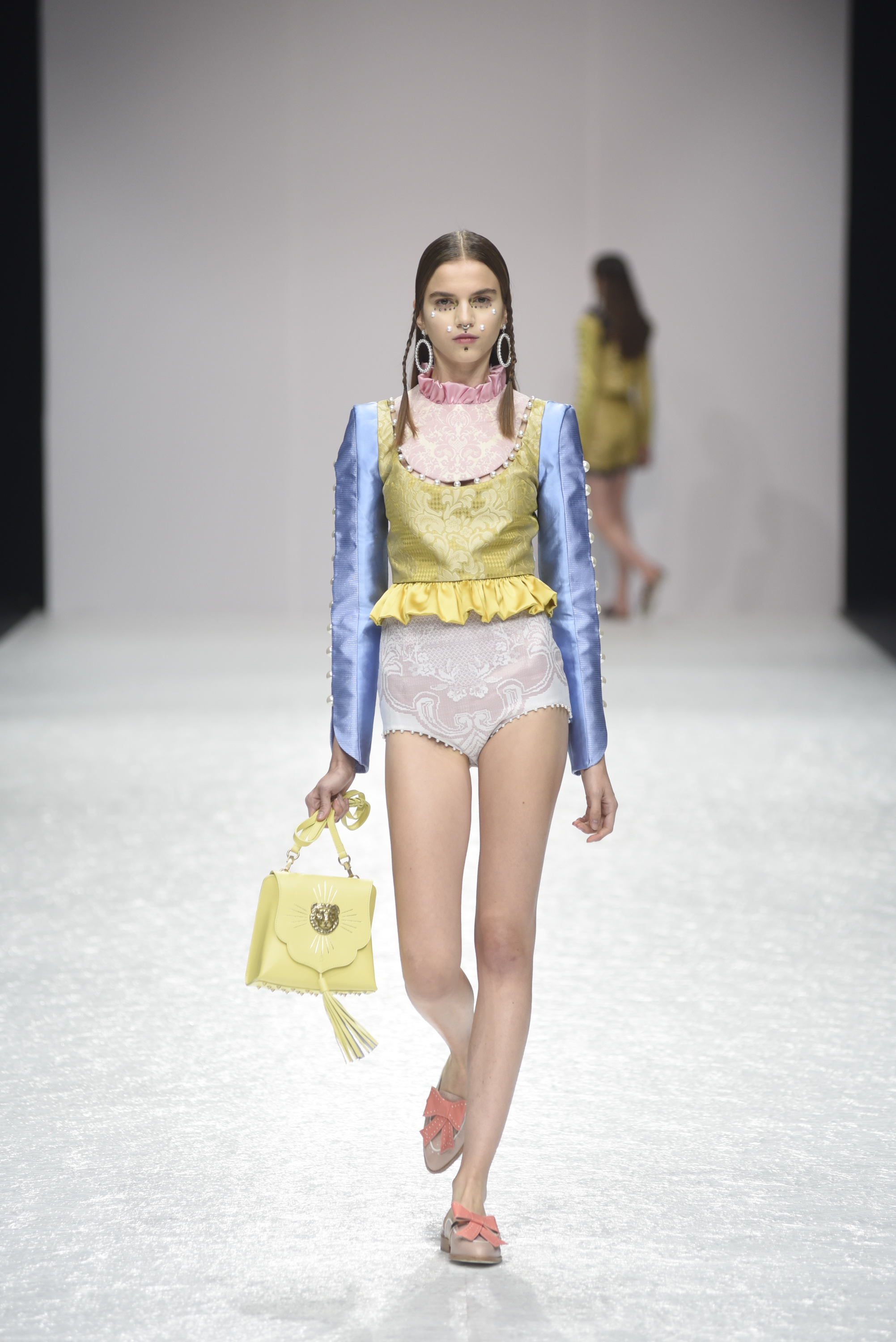Tahmina Begum travels to Belgrade to meet Ana Ljubinkovic…
Ana Ljubinkovic is something special. That’s how she was described by Nenad Radujević, founder of Belgrade Fashion Week earlier this October as we headed to Ljubinkovic’s show. It’s also what I thought when her first model walked out.
Ljubinkovic has made a name for herself outside of the Serbian walls she grew up in, in all honesty, she was the only fashion designer I had heard of before heading to Belgrade. Her shows in London tend to be packed as everyone wants to see a Ljubinkovic creation. They are never ‘clean cut’ or ‘streamlined’ and, at first, they don’t seem practical for everyday, even though you could most definitely wear all her pieces outside of the catwalk. Seeing the effects of the 1999 Chinese embassy bombing in Belgrade and experiencing the solely heteronormative culture, walking around beautiful, binary and broken Belgrade, I was curious to understand how Ana Ibrinchovich came up with such queer designs: sleeves mimicking puffy wings, gay dicky bows and fine art portraiture slammed in the middle of medieval lace-trimmed gowns.

“Art is important for me,” she says while describing the birth of her collection, “that’s the part of the collection that holds a part of me”. This comes as no surprise, Ljubinkovic studied painting at the University of Belgrade and fell into fashion design accidentally while dreaming up fashion sketches, never really thinking they’d ever come to life.

What is a surprise is how keen the fashion designer is to keep kitsch culture alive. Fifteen years ago this wouldn’t be a problem as the pre-Instagram world had designers like Meadham Kirchhoff who cared about the whimsical. But Ljubinkovic who still lives and designs from Belgrade (and when asked why when she could live anywhere with her international recognition, she reflexes with “why not?”) cares about bringing the art via clothing to Serbia, then to the rest of the world.
“I really love kitschy details. To play with kitsch as an element, you have to have the aesthetic knowledge to do it the right way. From the pearl drops to the diamantes. Great designers have to feel the rhythm, proportion, balance, form, to know the colour theory, to know the fabrics, the technology”. And Ljubinkovic is right in that for those who don’t understand kitsch style and culture, for those who just see it as ‘bad taste’ fail to see the irony in not taking yourself too seriously in fashion – an epidemic that seems to have spread even more so as fashion has become about the numbers thanks to social media.
Ljubinkovic favourite kitsch designers are Manish Arora, Jean-Charles de Castelbajac, Pam Hogg, Mary Katrantzou, Vivetta and “of course, Gucci” – they are “the real superstars” as, in her book, it’s all about the attitude. “You have to be brave and humble at the same time”. The kitsch style would suck if in the process of having fun – but also making fun of yourself – you had an entitled personality to go with it. It’s only then that the oversized earrings and obnoxiously feminine pieces can make you look dated.
There’s a sense of heritage that comes to play with Ljubinkovic’s pieces. She loves to learn about art, architecture, technology and read the biographies of Nikola Tesla or Marina Abramović – hence the history lesson across her puffy dresses – she makes it clear that she doesn’t have time for anyone else’s fashion. She’s interested in people’s stories and in response, what they put on their back and in their minds. Her sense of tunnel vision when it comes to only her fashion enables her fashion shows to have a strong narrative but also for there to be a consistent house style. You know an Ana Ljubinkovic dress when you see one.

So when I ask her what does the future look like for her and kitsch culture, she responds matter of factly with the way trends work. “Now is the time to be brave, to experiment and to be eclectic. But even in a house like Gucci, trends get boring. There will be the nude basic craze [as in the normcore trend] all over again”. But that doesn’t seem to be the case with kitsch style, maybe it’s Ljubinkovic’s lime green peplums, her doggy illustrations or the sweetheart dresses, or maybe it’s because it’s so out of place that people always search for it. In a way, being kitsch seems to be trendless.
Or what it really could be is how aspirational is the confidence it generally takes to wear an Ana Ljubinkovic trouser suit for example. To that, the fashion designer says, “real avant-garde is to really be yourself and be unapologetic about it”.
The designer is currently working on her next collection

